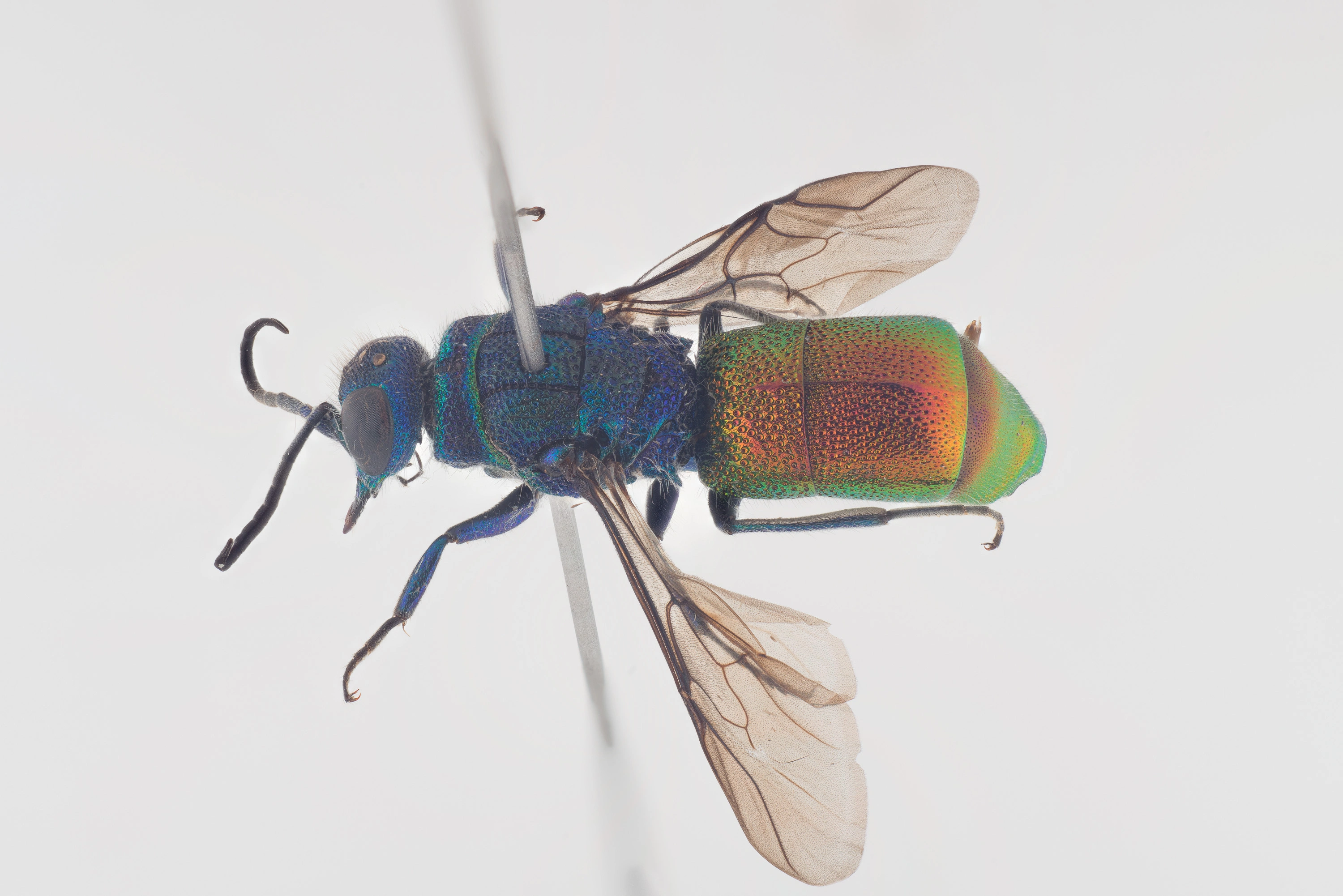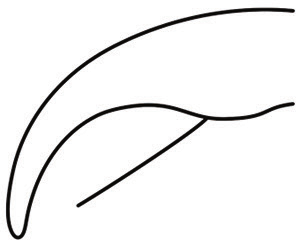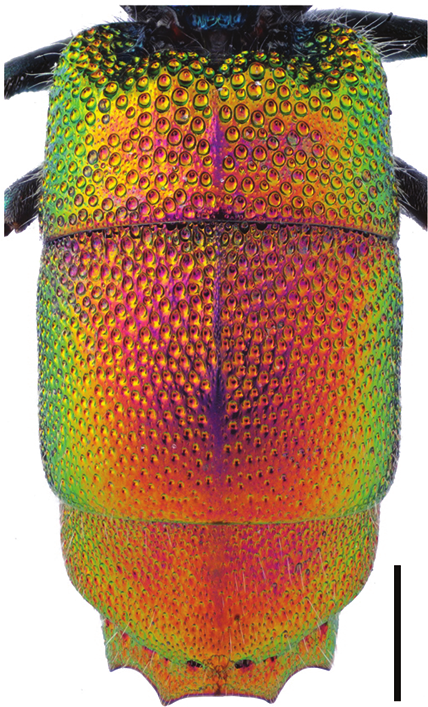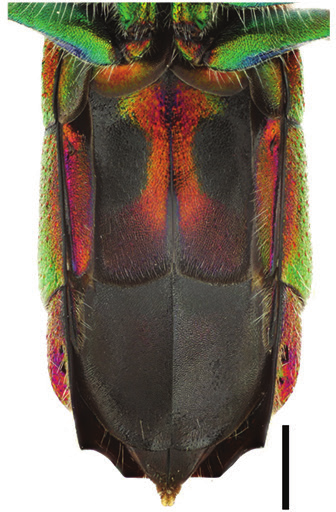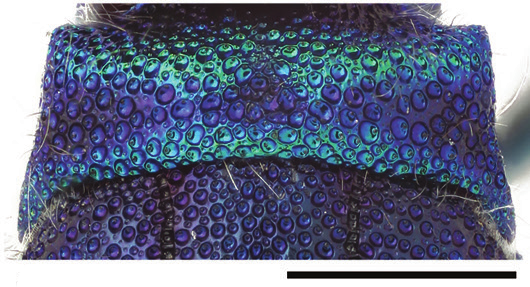Chrysis longula
A relatively rare species occuring in warm forest margins with large amounts of dead wood. The host is Ancistrocerus antilope, and probably also other larger species of Eumeninae. This is one of the largest species of Chrysis, and it is characterised by coarse punctation on T2 and red sternites.
- Innhold
- Diagnosis
- Distribution
- Biology
- Remarks
Diagnosis
Figure 6
Tarsal claw: Chrysis longula.
Figure 88
T3, dorsal view: C. longula ♂. Scale 1 mm.
Figure 102
Metasoma, dorsal view: C. longula ♀. Scale 1 mm.
Figure 121
Metasoma, ventral view: C. longula ♀. Scale 1 mm.
Figure 161
Pronotum, dorsal view: C. longula ♂. Scale 1 mm.
Length 10–13 mm.
The body is elongate with parallel sides (Fig. 102) and usually large compared to other species of the C. ignita group. The head and mesosoma are dorsally blue or black, and the female has extensive golden green reflections on the pronotum, mesopleuron and mesoscutellum. The punctures of the mesoscutum are usually lighter coloured than the interstices (as in C. impressa). The tergites and sternites are golden red (Figs 102, 121) and the black spots of S2 are long and narrow (Fig. 121). The punctation of T2 is anteriorly very coarse, and the surface of T3 is shiny in the female (Fig. 102). The mandible is long and relatively thick (in the male as in Fig 146). Small specimens can be confused with C. angustula and C. corusca, but the punctation of T2 is coarser anteriorly and the black spots of S2 are narrower. The sternites are mostly red, not greenish as in C. corusca. The males are often difficult to distinguish from C. impressa and C. subcoriacea. Compared to C. impressa, the sternites are usually brighter red and the black spots of S2 are more elongate. The punctation of T2 is coarser anteriorly and the metasoma is more elongate in shape. Compared to C. subcoriacea, the pronotum is more abruptly bicoloured (Fig. 161), the punctation of T2 is usually coarser anteriorly, the lateral margin of T3 is more concave and the central interval of the apical teeth is more arcuate (Fig. 88).
Distribution
Denmark, Estonia, Finland, Latvia, Lithuania, Norway, Sweden. Relatively rare.
Trans-Palearctic: from western Europe to central Asia, Siberia and China (Linsenmaier 1959, 1997, Rosa et al. 2014).
Be aware that the records present in the GBIF map may be misleading for some countries due to unrevised data sets or missing information.
GBIF Taxon: Chrysis longula Ab.Biology
Habitat: forest margins, clearings and gardens with sun-exposed dead wood. Adults can be found on walls of old log buildings (barns, sheds etc.), log piles, poles and dead tree trunks (e.g. Betula, Populus, Salix).
Flight period: early June to late August.
Host: Ancistrocerus antilope (Panzer), Symmorphus crassicornis (Panzer) and S. murarius (Linnaeus) (Linsenmaier 1959, Heinrich 1964, Morgan 1984, Brechtel 1985, Petit 1987, Martynova and Fateryga 2015), possibly also Ancistrocerus parietinus (Linnaeus) and species of Euodynerus Dalla Torre (Vespidae) (Blüthgen 1961, Morgan 1984, Martynova and Fateryga 2015).
Remarks
Eastern Palearctic populations of C. longula belong to ssp. aeneopaca Linsenmaier, 1959 which differs from the nominotypical subspecies by having fine punctation and brownish colour anteriorly on tergites. Specimens of ssp. aeneopaca can sometimes be confused with C. subcoriacea. One specimen similar to ssp. aeneopaca has been found in Finland (Kuopio), but the occurrence of the taxon in Fennoscandia is questionable (Paukkunen et al. 2014).
